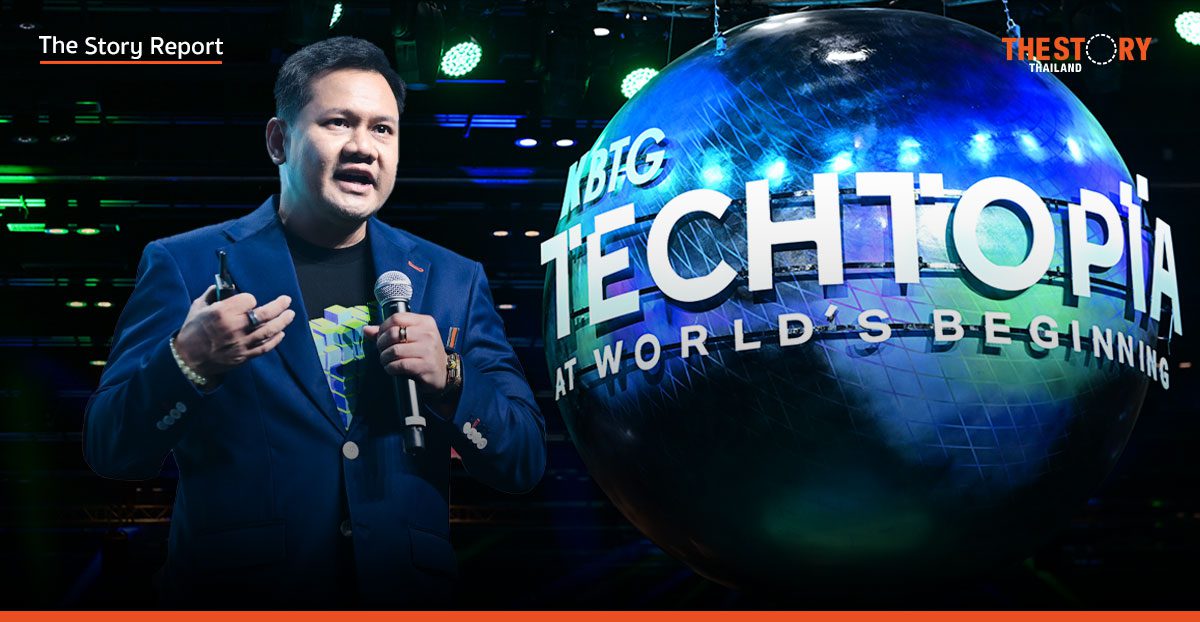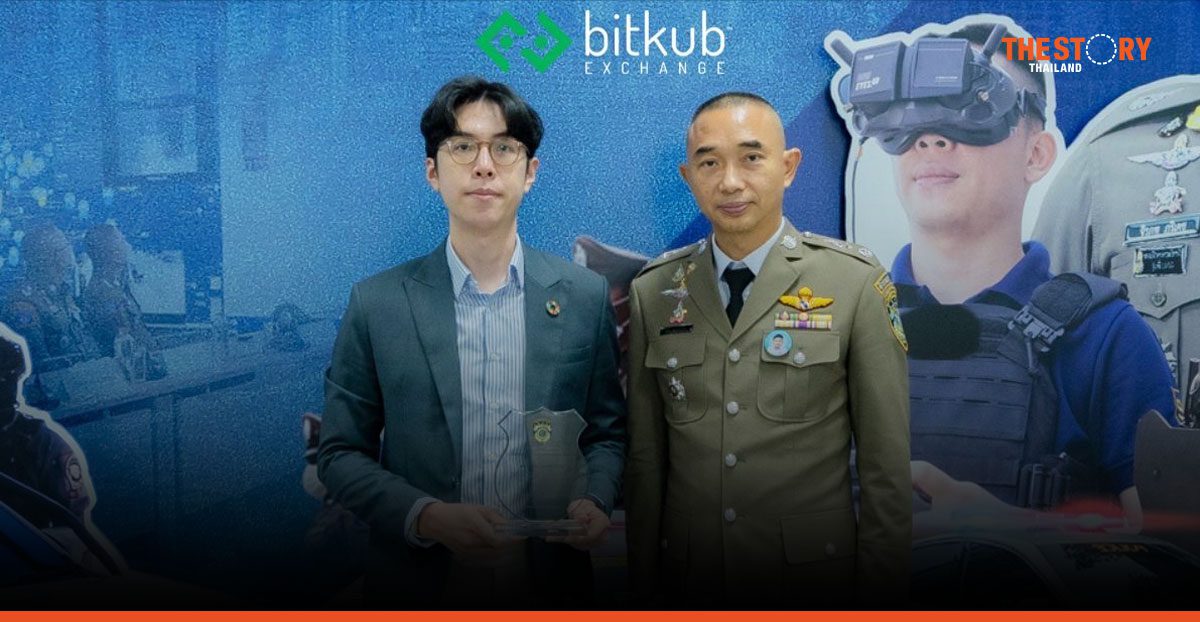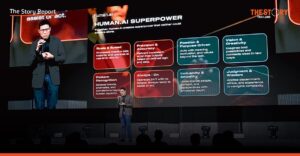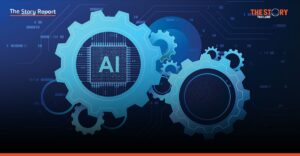As advancements in IT bring us closer to an era where Artificial Intelligence (AI) can communicate like humans and even create virtual humans capable of assisting or replacing us in certain tasks, KBTG is pioneering a new approach.
The “Human-First x AI-First Transformation” strategy showcases a concrete example of human-AI collaboration. This forward-thinking approach aims to develop an ecosystem that elevates business potential for sustainable growth.
5 Key AI Trends in the Next 5 Years
The rapid evolution of AI makes it challenging to predict the future, with advancements happening faster than ever before. However, by observing current trends, KBTG has identified 5 key areas where AI is expected to have a significant impact in the coming years. Thadpong Pongthawornkamol, Managing Director of KBTG, highlights these trends, particularly emphasizing the continued growth of Large Language Models (LLMs):
Explainable, Responsible, and Rational AI: While LLMs can communicate like humans, they still lack human-level reasoning and decision-making capabilities. Future development will focus on making AI more rational and understandable, ensuring that humans can comprehend AI’s reasoning and vice versa.
Domain-Specific AI: AI will be increasingly tailored to specific industries and tasks. Instead of generic AI, it will see specialized AI applications in fields like medicine, finance, and tourism. This shift involves refining LLMs to be smaller and more focused on specific domains.
Multimodal AI: Humans interact with information through multiple channels, and AI needs to do the same. Multimodal AI will enable AI to process and understand various data types, including text, images, and audio, expanding its capabilities and applications.
Human-AI Interaction: The focus will be on enhancing interaction between humans and AI, both in terms of AI understanding humans and humans understanding AI. This involves not just technological advancements but also cultural considerations. KBTG’s research with MIT Media Lab explores the influence of AI on humans and how humans can effectively collaborate with AI, particularly with the rise of virtual humans in the workplace.
Organizational AI: The lines between human workers and AI agents (bots) will blur. Organizations will need to adapt their processes to accommodate a unified workforce of humans and bots. This shift could unlock significant efficiency gains and drive economic development.
KBTG Prioritizes 5 Key AI Trends
KBTG is committed to researching and developing AI across five key trends, emphasizing responsible and ethical implementation. Here’s how they are approaching each trend:
- Rational and Explainable AI: As a financial technology company, KBTG prioritizes the safe, transparent, and reliable use of AI. This includes focusing on Explainable AI, ensuring that AI’s decision-making processes are understandable and trustworthy.
- Domain-Specific AI: KBTG recognizes the importance of tailoring AI to specific industries. They are actively adapting general-purpose Large Language Models (LLMs) for applications in finance, banking, and IT, aligning with their core business focus.
- Multimodal AI: KBTG acknowledges the need for AI to process and understand diverse data formats, including text, images, and financial data. They are exploring and investing in Multimodal AI to enhance AI’s ability to handle the complexities of real-world information.
- Human-AI Interaction: KBTG emphasizes the importance of seamless collaboration between humans and AI across all stakeholders. This includes customer service, employee support, regulatory compliance, and stakeholder communication.
- Organizational AI: KBTG aims to integrate AI throughout the organization, fostering a culture of AI adoption and understanding. This involves transforming workplace culture, shifting mindsets, and equipping employees with the skills to effectively utilize and contribute to AI development.
KBTG’s focus on these five trends demonstrates their commitment to responsible AI development and their proactive approach to leveraging AI for business growth and innovation.
KBTG’s 5-Year Plan
KBTG has announced a comprehensive 5-year plan to harness the power of AI and Machine Learning across three key areas:
- Financial Well-being: KBTG aims to empower users, employees, and the general public to achieve financial well-being. AI will play a crucial role in enabling smarter financial decisions related to saving, spending, and investing. This includes developing solutions that provide seamless access to financial services, both through self-service channels and assisted support from bank staff.
- Trust, Security, and Protection: KBTG prioritizes safeguarding bank and customer assets against diverse threats, including physical and cybersecurity risks. AI will bolster security measures, ensuring customers can trust in the safety and reliability of KBTG’s services.
- Customer Experience: KBTG is committed to delivering exceptional customer experiences across all touchpoints. Leveraging AI’s advancements in human-like communication and virtual human development, KBTG will create more engaging and personalized customer interactions, leading to greater efficiency and satisfaction.
“We already have core technologies in place to drive our business, such as data analytics systems enhanced by Machine Learning and AI. For example, we utilize these technologies for credit scoring and personalized product recommendations. We anticipate continued evolution in these areas over the next 5 years, with emerging technologies enabling us to achieve our goals in financial well-being, security, and customer experience,” said Thadpong.
KBTG’s strategic focus on AI and Machine Learning underscores their commitment to innovation and customer-centricity, paving the way for a future where technology empowers individuals and businesses to thrive.
KBTG’s “ABC” Strategy
KBTG has adopted an “ABC” strategy for developing and implementing AI and Machine Learning, aiming to create a thriving AI ecosystem. This approach emphasizes a sustainable, practical, and scalable path towards AI adoption.
A – Apply: KBTG believes that becoming a successful AI creator starts with being an effective AI user. Organizations don’t always need to build AI models from scratch. Instead, they can leverage readily available AI tools and apply them to their operations. This fosters a deeper understanding of AI across the organization and among customers, promoting its proper and beneficial use. KBTG actively applies AI and Machine Learning in various use cases, gathering feedback on user experience and accuracy to ensure they are on the right track before wider deployment.
B – Build: Sometimes, developing quick-win solutions allows for rapid testing and evaluation. This helps determine whether a solution is worth pursuing further. If initial trials show promise, KBTG invests in building “Fundamental Property” – enhancing accuracy, efficiency, and effectiveness. This involves dedicated research teams, leveraging in-house technology, and collaborating with business units, customers, and IT to refine and optimize solutions.
C – Commercialize: When proven successful, KBTG’s AI solutions are ready for commercialization. Kasikorn X (KX), a subsidiary of KBTG, takes the lead in expanding these technologies and products beyond the bank’s internal operations and into the broader market. This includes providing funding and support to startups, further enriching KBTG’s AI ecosystem and strengthening its product offerings.
KBTG’s “ABC” strategy provides a clear and structured framework for AI development, emphasizing practical application, continuous improvement, and ultimately, commercial success.
KBTG uses AI to boost software development
KBTG is leveraging AI to enhance its internal software development processes, from requirement analysis and coding to testing and deployment. Jirat Srisawat, Assistant Managing Director of Technical Excellence at KBTG, explains that the first step involves utilizing AI as an “assistant” to provide guidance and improve efficiency.
Here’s how AI is being integrated into various stages of software development:
Coding: AI assists developers by generating code snippets, completing code, and even creating unit tests. This is particularly helpful for repetitive tasks, where AI can generate code based on specific instructions, freeing up developers to focus on review and refinement.
Requirement Analysis: By connecting AI with business data, KBTG can perform more comprehensive requirement analysis, leading to more accurate and detailed insights.
Testing: Traditionally, developers spend significant time writing scripts and creating test scenarios. Now, AI can be used to generate best practice test cases based on predefined prompts, significantly reducing time and effort.
This AI-driven approach not only streamlines software development processes but also empowers developers to focus on higher-level tasks, ultimately leading to faster development cycles and improved software quality. KBTG’s innovative use of AI demonstrates its commitment to staying at the forefront of technology and leveraging its potential to enhance internal operations.
AI Agents build software at KBTG
KBTG is taking its AI-powered software development to the next level with Autonomous Software Delivery, a concept closely related to Multi-Agents. This approach involves using AI agents to handle increasingly complex tasks, ultimately streamlining the entire software development lifecycle.
Jirat explained that while AI assistants primarily aid human developers, autonomous development empowers AI agents to take the lead, with humans providing direction and overseeing the results. This shift allows KBTG to delegate basic, repetitive tasks, and even certain development processes, entirely to AI. This frees up human developers to focus on more complex and creative challenges, ultimately boosting overall efficiency.
“With AI assistants, we focus on operational support, encouraging all employees to leverage AI in their daily work. Agents, on the other hand, are geared towards enhancing the development of the work itself,” said Jirat.
In recent months, KBTG has successfully used AI to generate code from specifications, translate code between programming languages, and assist programmers and software architects with complex tasks. AI excels at tasks that humans may conceptually understand but struggle to execute efficiently, such as navigating syntax and coding rules. By using natural language commands to instruct AI, KBTG has significantly reduced development time.
“Our most prominent use case right now is using AI to assist with repetitive tasks. The challenge lies in fine-tuning AI to create and execute novel tasks, which is an area we’re actively exploring,” said Jirat.
KBTG’s exploration of autonomous software development highlights its commitment to pushing the boundaries of AI and leveraging its potential to transform software development practices.












